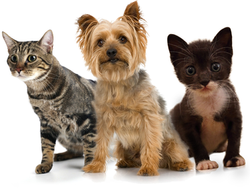Why Chickens Love Dust Baths (And Why You Might Want One Too)
- ER Kent

- Jul 29
- 3 min read
These dirt-loving divas don’t just roll in filth for fun—dust bathing is critical self-care for chickens, and surprisingly beneficial for humans, too.

If you've ever watched a hen throw herself into a patch of dry earth, flap wildly, and then sigh with satisfaction, you’ve witnessed one of the strangest and most essential rituals in the backyard flock world: the dust bath.
It might look like your birds are having a meltdown—but in truth, they’re practicing one of the most natural and vital hygiene behaviors in the animal kingdom.
And while your chickens are busy fluffing, tossing, and coating themselves in soil, there’s a surprising twist: dust bathing might be good for you, too (just in a slightly different way).

What Is a Dust Bath?
A dust bath is exactly what it sounds like—a dry, dusty patch of dirt where chickens roll, dig, and fluff their feathers. Instead of water, they rely on fine soil or ash to clean themselves.
According to poultry experts at Purdue University Extension, dust bathing helps chickens:
Remove mites, lice, and parasites
Absorb excess oil from their feathers
Cool down in hot weather
Relieve stress through instinctual grooming
It’s an evolutionary adaptation seen in wild birds too, including sparrows, pigeons, and even quail. Chickens don’t just enjoy dust bathing—they need it for health and well-being.

How to Make the Perfect Dust Bath for Your Flock
Chickens will often make their own dust baths—usually in your garden, flower beds, or any inconvenient patch of dirt. But offering a designated space helps prevent landscape destruction and keeps your birds parasite-free.
Your ideal setup should include:
A large container (kiddie pool, tire, crate, or a dug-in pit)
Dry, loose dirt or fine sand
Wood ash or food-grade diatomaceous earth (optional, for mite control)
A rooftop or sheltered area to keep it dry year-round
For best results, mix of play sand, soil, and sifted wood ash, kept dry and replenished weekly.
Bonus: the hens will keep it fluffed themselves—no maintenance needed.

Dust Bathing Is Social, Too
Chickens are flock animals, and dust bathing often becomes a group spa day. It’s not uncommon to see several hens bathing side by side, trilling softly and wriggling like toddlers in a sandbox.
This social aspect isn’t just adorable—it may also support stress reduction and flock bonding.

Can Dust Bathing Benefit Humans? Surprisingly, Yes
While humans don’t roll in the dirt like our feathered friends, we do benefit from dry therapies inspired by the same principles.
Clay and ash baths, used in traditional medicine and spa treatments, help absorb toxins and oils from the skin—similar to how ash helps chickens control parasites.
Diatomaceous earth, often used in natural skincare, is made from fossilized algae and gently exfoliates the skin while offering trace minerals.
Earthing or grounding (walking barefoot in soil) has been shown to reduce inflammation, improve mood, and support sleep, according to studies like those from the Journal of Environmental and Public Health.
So while you might not be flapping your elbows in a dust pit, there’s plenty of inspiration to take from the dirt-loving spa rituals of your hens.

What If Your Chickens Aren’t Dust Bathing?
If your flock is avoiding dust baths, it may be due to:
Too much moisture (wet or clumped soil won’t fluff)
Parasite infestations or skin irritation
Lack of privacy or shade (hens want safety to relax)
No dry area during rainy or snowy seasons
The solution? Build a covered dust bath area inside the coop or run with dry ingredients, or even use a large tote for small flocks in winter. Storey’s Guide to Raising Chickens recommends adding a heat lamp nearby in colder climates to keep it usable year-round.

Final Dusty Thoughts: Let Your Chickens Live the Spa Life
There’s something magical—and oddly luxurious—about watching chickens enjoy a dust bath. It’s not just hygiene. It’s joy. It’s instinct. It’s therapy.
And as it turns out, it’s a little reminder that nature has already figured out some of the best wellness routines, with nothing more than dirt, sunlight, and the freedom to roll around like nobody's watching.








Comments